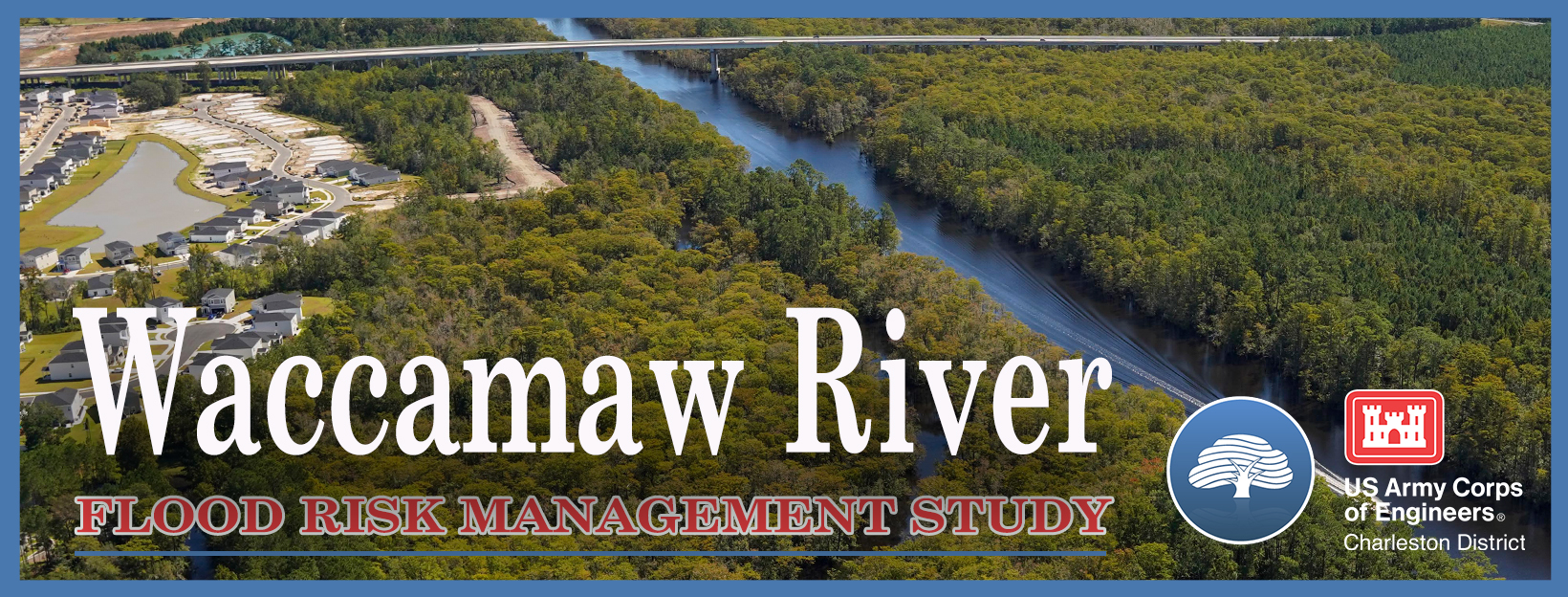
The U.S. Army Corps of Engineers Charleston District and Horry County are partnering to study flood risk reduction measures for flood impact areas along the Waccamaw River and its tributaries.
Charleston District and Horry County signed a Feasibility Cost Share Agreement in August 2022 to kick-off the Waccamaw River Flood Risk Management Study. The purpose of the study is to address flood and life safety risk to communities and transportation routes specifically within Horry County, and to recommend a plan to reduce this risk. Primary flood impact areas identified in Horry County based on historical flooding information include Bucksport, Socastee, City of Conway, Red Bluff, and Longs.
The study is evaluating both structural and nonstructural measures to reduce flood risks. Examples include flood barriers, floodwater diversions, and flood water retention using a range of hardened structures such as flood walls to nature-based structures such as floodplain benching. Nonstructural measures being studied include elevating, floodproofing, and acquiring structures in the floodplain.
The Study Objectives
• Reduce/mitigate flood damages to structures, critical infrastructure, and roads within the affected communities of Conway, Bucksport, Socastee, Red Bluff and Longs
• Increase the accessibility and resilience of ingress/egress and supply routes
• Reduce the likelihood and consequences of flooding on human life and safety
Study Status
Input provided by the public, and by state and federal agencies, has been used to develop an array of action alternatives to address flood risks in the four flood impact areas. The Corps and Horry County have been evaluating and modeling the actions in relation to existing and future conditions, along with assessing community characteristics, to identify which actions, if any, are effective at reducing flood risks. The effective actions that are most beneficial in reducing flood risks to the communities that meet federal interest requirements will be tentatively selected for further refinement and recommendation. The results of the evaluation have been written up in a Draft Feasibility Report and Environmental Assessment, which was released for public review and comment on September 9, 2024. The public comment period closed on October 9, 2024.